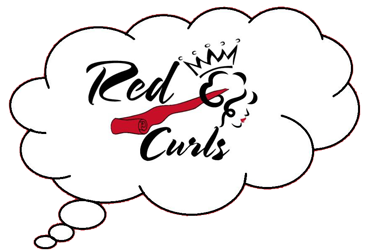What is Co-washing?

Co-washing is the physical act of cleansing your hair with a conditioner instead of a shampoo to protect your natural oil (moisture) from being washed away with very harsh and drying sulfates.
The thought behind this is that conditioners are formulated with gentle cleansers known as cationic surfactants. They are light enough to cleanse (but not deep clean) while imparting more moisture into your parched tresses.
According to an article from Skin Appendage and Disorders, co-washing ” can prevent hair breakage and regain the balance of the sebum production by decreasing the overproduction of sebum and dryness that follow the deep cleansing. Still, there is no scientific data to prove it. The co-washing method involves mechanical removal of dirt and residues. Before co-washing, the hair should be thoroughly rinsed with water.”
The History & Function of Conditioners

Conditioners were created to supplement shampoos. To understand why we need a little history lesson.
Hairstyling routines began as early as 4000 B.C. During the Middle Ages, purity of the soul was measured by external cleanliness, which leads to an increased focus on cleansing and hygiene. As time continued, people realized soap left scum and build-up. In 1927, the first liquid shampoo was created to combat the soap scum left from soap and other herbs, and others passed down tradition.
Sulfates were introduced in the 1930s to solve the issue soaps caused for the hair, but many people soon discovered sulfates left the scalp and hair very dry, which required the need for more moisture to be added back into the hair. Since naturally textured hair is prone to dryness, the demand for a synthetic sebum-like substance grew.
Sebum is the ideal conditioner for our hair because our body produces explicitly it to moisture our hair and skin. Since sulfates remove this moisture, conditioners were created to enhance the overall feel, appearance, reflectance, fullness, and manageability of the hair, therefore minimizing static electricity, increasing hair shine, volume, and improving hair manageability. They are also used to re-condition the hair following chemical treatments, such as waving, straightening, and coloring, and following physical trauma induced by hair drying, brushing, and styling. (D’Souza, Paschal, and Sanjay K Rathi.)
How Does Co-washing Work?

Conditioners are formulated with Cationic surfactants. Cationic surfactants are a class of positively charged detergents (check out the differences between shampoos article to learn more about cleansers) that are gentler to provide a light everyday cleansing as opposed to a deep clean removing the sebum you need.
Why does the charge of the surfactants matter? Well, our hair is negatively charged, like magnets, opposites attract.

The negative charge of our hair is attracted to the positive charge of the conditioner; this allows the detergents to bind to the hair gently cleansing and moisturizing the hair and scalp.
“Cationic surfactants are inferior cleansers and do not lather well and are not compatible with anionic (surfactants strong enough to clarify all build-up from hair – including silicones) detergents, limiting their utility. However, they are excellent at imparting softness and manageability to chemically damaged hair, and so are primarily used as a daily shampoo for damaged hair such as in case of permanently dyed or chemically bleached hair.” (D’Souza, Paschal, and Sanjay K Rathi.)
These gentle cleansers work to provide more moisture than cleansing for the hair. These kinds of cleansers are perfect for light daily cleaning, those that do not have product build-up.
Co-washing Doesn’t Work for Everyone, How Do I Ensure It Will Work For Me?

The main reason co-washing doesn’t work for most people is that many never understand co-washing alone is not proper hair care practice.
Co-washing is never meant to substitute clarifying your hair. Conditioners moisturize the hair by adding a light, flexible film barrier around the strand to seal in moisture. Still, the conditioner will never be strong enough to clarify or remove that build-up of a flexible film. That is why you need to clarify your hair.
You can clarify your hair using acidic rinses such as apple cider vinegar rinses or acidic rinses. If you don’t want to measure out the rinse, a sulfate-free clarifying shampoo is the most accessible and effective way to remove all build-up co-washing causes.
Whether you choose to clarify with shampoo or an acidic rinse, please remember you should be clarifying your hair AT LEAST once a month.
By clarifying regularly and incorporating scalp brushes to help you cleanse (both with co-washing and clarify) to scrub the scalp, ensuring it’s clean and free from build-up and dandruff, while your hair gets all the moisture it craves.
Can You Co-wash With Any Conditioner or Only Specifically Marketed Co-washes?

Most on the market rinse-out conditioners are formulated with Cationic surfactants, meaning they make decent co-washes (depending on the formula).

A few of my favorite include Tailored Beauty Coconut Crème Conditioner, TRESemme Botanique Nourish & Replenish Conditioner, and Veracious Curls Conditioner.
If you are looking for specifically marketed co-washes, some of my favorites include Inashi Naturals Tropical Escape Co-wash, Curl Smith Curl Quenching Co-wash, and As I am Co-wash.

| Original content here is published under these license terms: | X | |
| License Type: | Read Only | |
| License Abstract: | You may read the original content in the context in which it is published (at this web address). No other copying or use is permitted without written agreement from the author. | |

